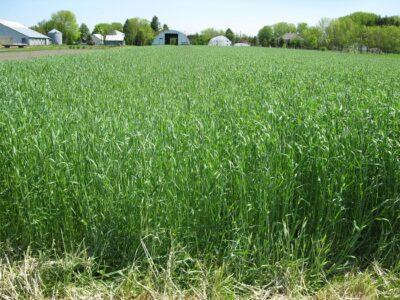
If you love gardening, but want to try something different than the regular vegetables, you may like planting summer cover crops.
Cover crops (“green manure”), although often grown in the winter, have many benefits as a summer crop. Summer cover crops are great for suppressing weeds and increasing the fertility of the soil. They are as important to plant as regular vegetables, The more live plants you grow in your garden, the better and richer the soil will be. Let’s take a look at summer cover crops, and you can plan your next garden.
Benefits of Summer Cover Crops
Summer cover crops control pests and diseases by creating diversity in the garden. This diversity helps prevent many diseases and damage from insects. Helpful insects are attracted to cover crops.
Soil is improved, and nutrient surges are controlled. These surges happen when you place fresh manure or plant matter around your vegetables and garden. Cover crops are good for preventing pollution from runoff. They also hold extra nutrients for future crops in the garden.
The Best Source For Non-GMO Heirloom Seeds Is Right Here!
Cover crops, especially summer ones, are a good way to fill in crop gaps, like when one crop ends and there is time before the next crop is planted. Cover crops are also beneficial when cash crops fail. There are some quick-growing crops like brassicas and grasses that are good for that particular purpose.
One other benefit of summer cover crops is they can be used for livestock or poultry forage. They are helpful for gardeners and farmers alike.
Caring for Summer Cover Crops

Cover crops are easy to start and only require basic care.
Planting
You can use a rake to work up the ground, and then rake after the seeds are in. Raking helps the seed and soil make complete contact, and also protects the seeds from birds. If the seeds are too close to the surface, the birds will eat them all. Once the soil is worked up, you can also seed by hand. Cover the seeds and temp. Water right away, and then as needed. Remember to choose cover crops that will thrive in the summer heat, with some tolerance to drought.
Cover Crop Care
Mowing actually helps some larger cover crops to stay manageable, and some other crops (such as sorghum-sudangrass) improve root growth. White Dutch clover needs to be mowed occasionally to keep it from mixing with your vegetables and becoming competition. If you experience drought, remember that you must water your cover crops.
Killing Cover Crops
Although it sounds harsh, before your crops go to seed, you must kill them. You can do this by cutting the plant at the base. You can also mow the crops over, or use a weed trimmer. Lastly, dig the crop under and leave for two or three weeks before planting again.
The Cheap Way To Re-mineralize Your Soil
Here are five types of summer cover crops:
1. Rye: There are two types of rye. One is called annual, and the other is cereal. Both of these make excellent cover crops. Cereal rye can be started in late summer and will grow until late autumn. It will also come back in the spring. Annual rye can be planted early, and you don’t have to turn the crop over when finished.
2. Field Peas and Oats: These two crops are often grown together. Peas fix the nitrogen in the soil, and oats contribute to organic matter. The peas will climb on the oats. Both of these plants are cold tolerant so you can plant them any time.
3. Sorghum-Sudangrass: This is a tall growing grass that gets up to between five and 12 feet. It is a good idea to mow this crop down to six inches once it reaches three feet. It is very easy to care for and is visually pleasant.
4. Buckwheat: This crop is really not a wheat, but a plant with broad leaves. It is a fast-growing, smother crop so is good to use against weeds. Buckwheat provides a good canopy and attracts helpful garden insects. It matures in six to eight weeks, creating beautiful white flowers that are often used in floral arrangements. Don’t let it go to seed, however, or you will be finding buckwheat in your next crop.
5. Clover: There are many varieties of clover. Any clover fixes nitrogen and builds up soils. White Dutch clover is often used as a live mulch. It handles traffic and shade well. Yellow blossom sweet clover is excellent for building soils up and filling them with nutrients. There is a beautiful kind called crimson clover which is helpful and gorgeous.
Summer cover crops are a nice change of gardening. They are for all garden sizes, not just large-scale farmers. Pick one or two and discover the benefits of these cover crops during the hot summer months.
Have you ever used a summer cover crop? If so, what kind? Share your advice in the section below:
Every Year Gardeners Make This Avoidable Mistake — But You Don’t Have To. Read More Here.










